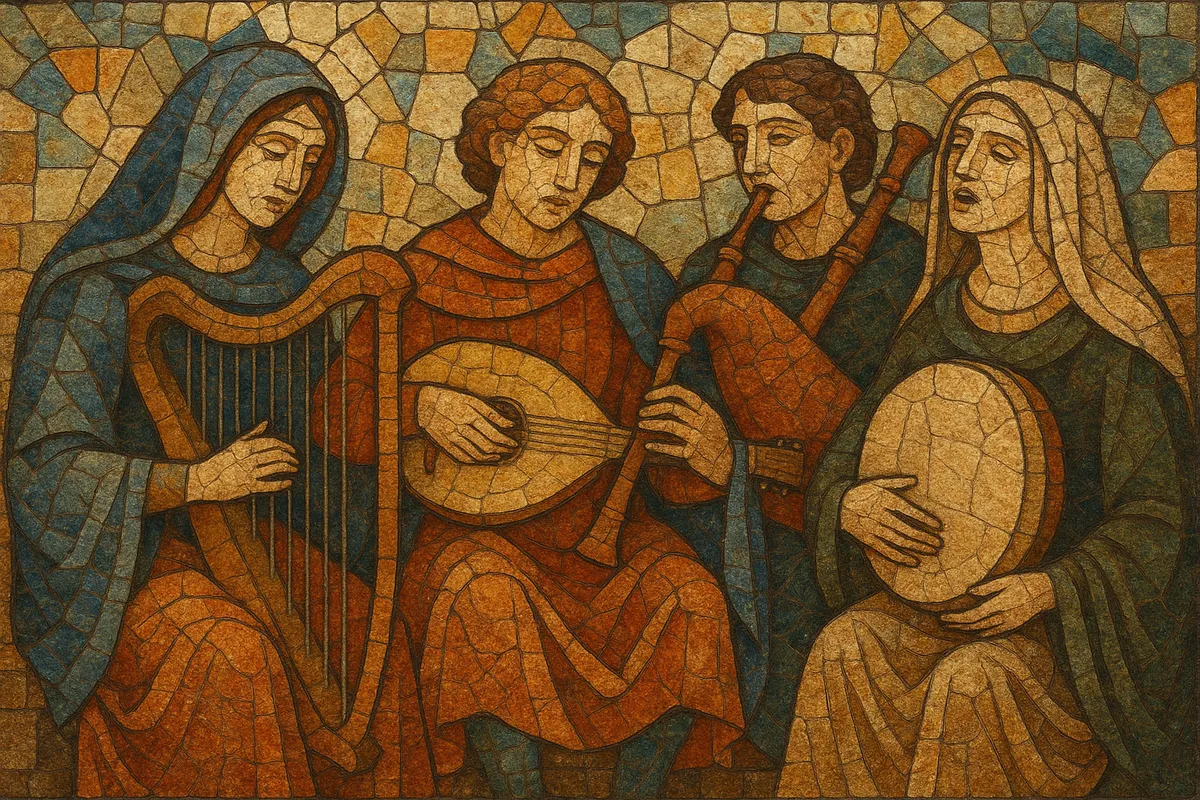Neo-medieval folk is a modern style that draws on the soundworld of European medieval music—minstrelsy, chant, courtly song, and dance—blended with contemporary folk and, often, subtle electronic textures.
Typical instrumentation includes hurdy-gurdy, lute, harp, vielle, recorders, shawms, bagpipes, hand drums (frame drum, bodhrán), and choral or solo vocals that may use Latin, Old French/Occitan, Middle High German, or other historic languages. Many artists mix these with ambient pads, drones, or understated beats.
Harmonically and melodically, the music favors modal writing (Dorian, Aeolian, Phrygian), drones, and simple counterpoint or parallel fifths reminiscent of early music, while rhythms often reference medieval dance forms (estampie, saltarello) alongside modern folk grooves. The overall affect ranges from ethereal and melancholic to ceremonial and dance-like.
Neo-medieval folk emerged in the 1980s as part of a broader early-music revival intersecting with the alternative and darkwave scenes. Inspired by historically informed performance practice and the growing availability of period instruments, artists began reimagining medieval repertoire and aesthetics with contemporary sensibilities. Early touchstones included projects that fused chant-like vocals, modal melodies, and acoustic timbres with ambient or gothic textures.
The 1990s saw a flourishing scene—particularly in Germany, Italy, and the UK—where ensembles and studio projects combined authentic instruments and medieval poetry with subtle electronics. Labels associated with darkwave and neoclassical dark wave helped circulate these sounds, and European festivals (including medieval fairs and gothic gatherings) provided live platforms. Seminal releases by groups such as Qntal, Estampie, Ataraxia, and Mediaeval Baebes helped establish a recognizable stylistic vocabulary: modal folk tunes, drone-based accompaniments, chant-derived choral writing, and tasteful use of synth pads or programmed percussion.
In the 2000s, neo-medieval folk diversified. Some acts emphasized acoustic authenticity and traditional dance rhythms, while others leaned into ambient production or gentle electronic beats. The genre also fed directly into adjacent styles—pagan folk and medieval rock/metal—broadening its audience at Renaissance fairs, folk festivals, and gothic/alternative events. Today it persists as a niche yet influential current, prized for its evocative, timeless atmosphere and its balance of historical color with modern craft.


